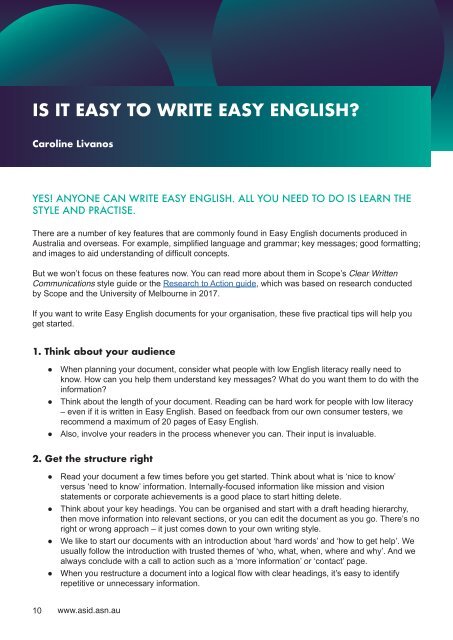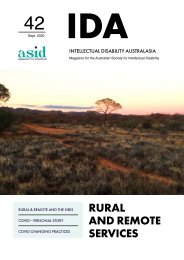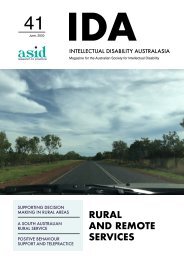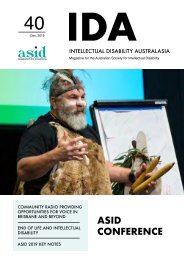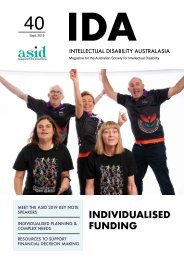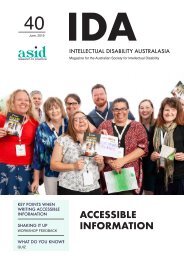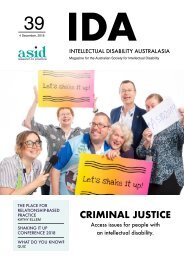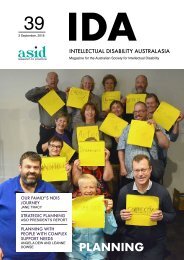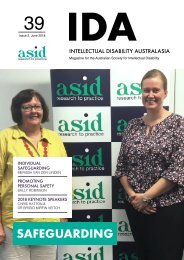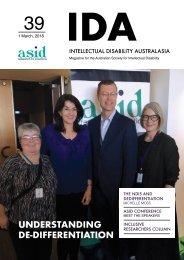IDA Magazine Vol 40 Iss 2 (June 2019)
Create successful ePaper yourself
Turn your PDF publications into a flip-book with our unique Google optimized e-Paper software.
IS IT EASY TO WRITE EASY ENGLISH?<br />
Caroline Livanos<br />
YES! ANYONE CAN WRITE EASY ENGLISH. ALL YOU NEED TO DO IS LEARN THE<br />
STYLE AND PRACTISE.<br />
There are a number of key features that are commonly found in Easy English documents produced in<br />
Australia and overseas. For example, simplified language and grammar; key messages; good formatting;<br />
and images to aid understanding of difficult concepts.<br />
But we won’t focus on these features now. You can read more about them in Scope’s Clear Written<br />
Communications style guide or the Research to Action guide, which was based on research conducted<br />
by Scope and the University of Melbourne in 2017.<br />
If you want to write Easy English documents for your organisation, these five practical tips will help you<br />
get started.<br />
1. Think about your audience<br />
●<br />
●<br />
●<br />
When planning your document, consider what people with low English literacy really need to<br />
know. How can you help them understand key messages? What do you want them to do with the<br />
information?<br />
Think about the length of your document. Reading can be hard work for people with low literacy<br />
– even if it is written in Easy English. Based on feedback from our own consumer testers, we<br />
recommend a maximum of 20 pages of Easy English.<br />
Also, involve your readers in the process whenever you can. Their input is invaluable.<br />
2. Get the structure right<br />
●<br />
●<br />
●<br />
●<br />
Read your document a few times before you get started. Think about what is ‘nice to know’<br />
versus ‘need to know’ information. Internally-focused information like mission and vision<br />
statements or corporate achievements is a good place to start hitting delete.<br />
Think about your key headings. You can be organised and start with a draft heading hierarchy,<br />
then move information into relevant sections, or you can edit the document as you go. There’s no<br />
right or wrong approach – it just comes down to your own writing style.<br />
We like to start our documents with an introduction about ‘hard words’ and ‘how to get help’. We<br />
usually follow the introduction with trusted themes of ‘who, what, when, where and why’. And we<br />
always conclude with a call to action such as a ‘more information’ or ‘contact’ page.<br />
When you restructure a document into a logical flow with clear headings, it’s easy to identify<br />
repetitive or unnecessary information.<br />
10 www.asid.asn.au


